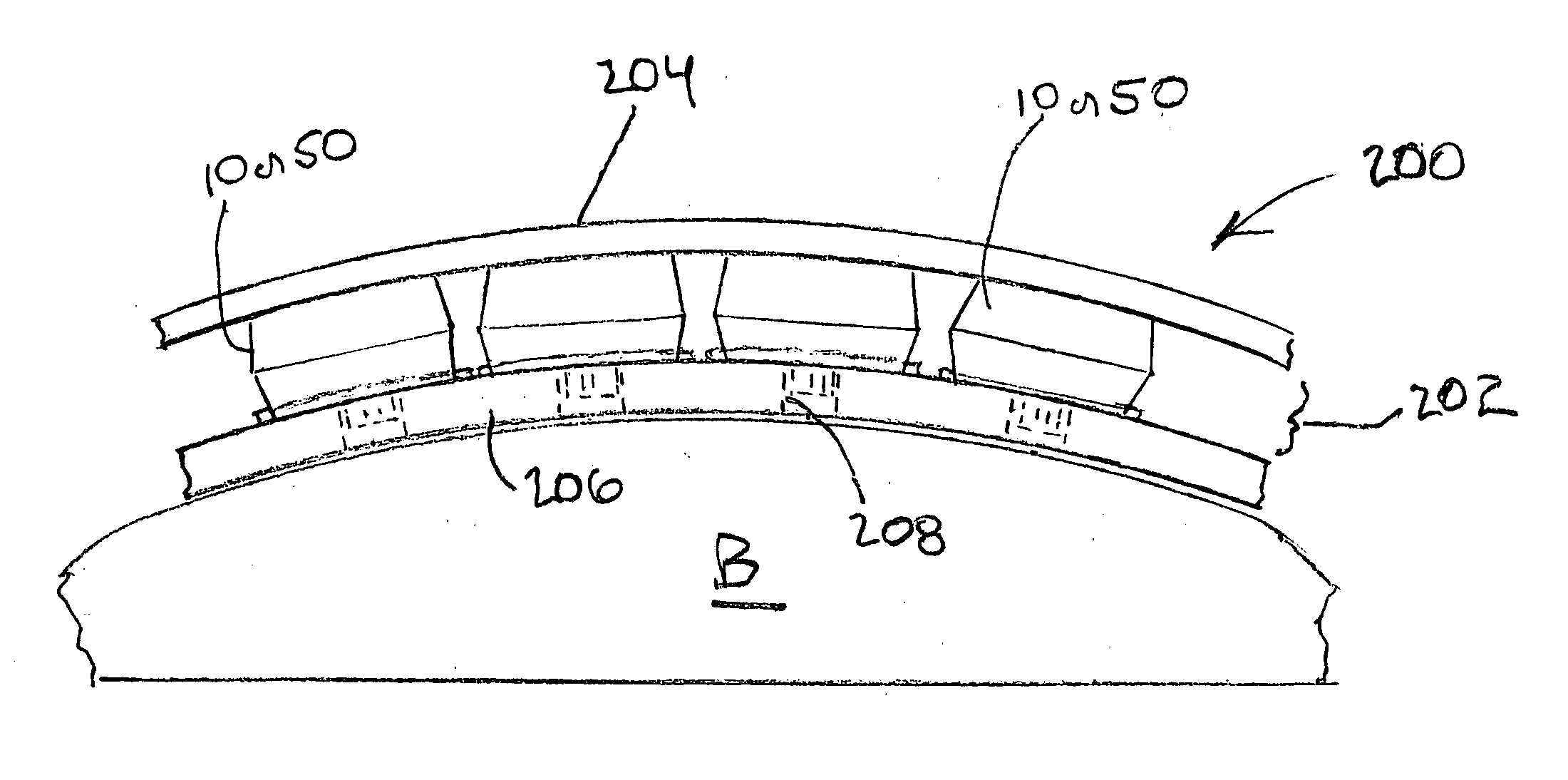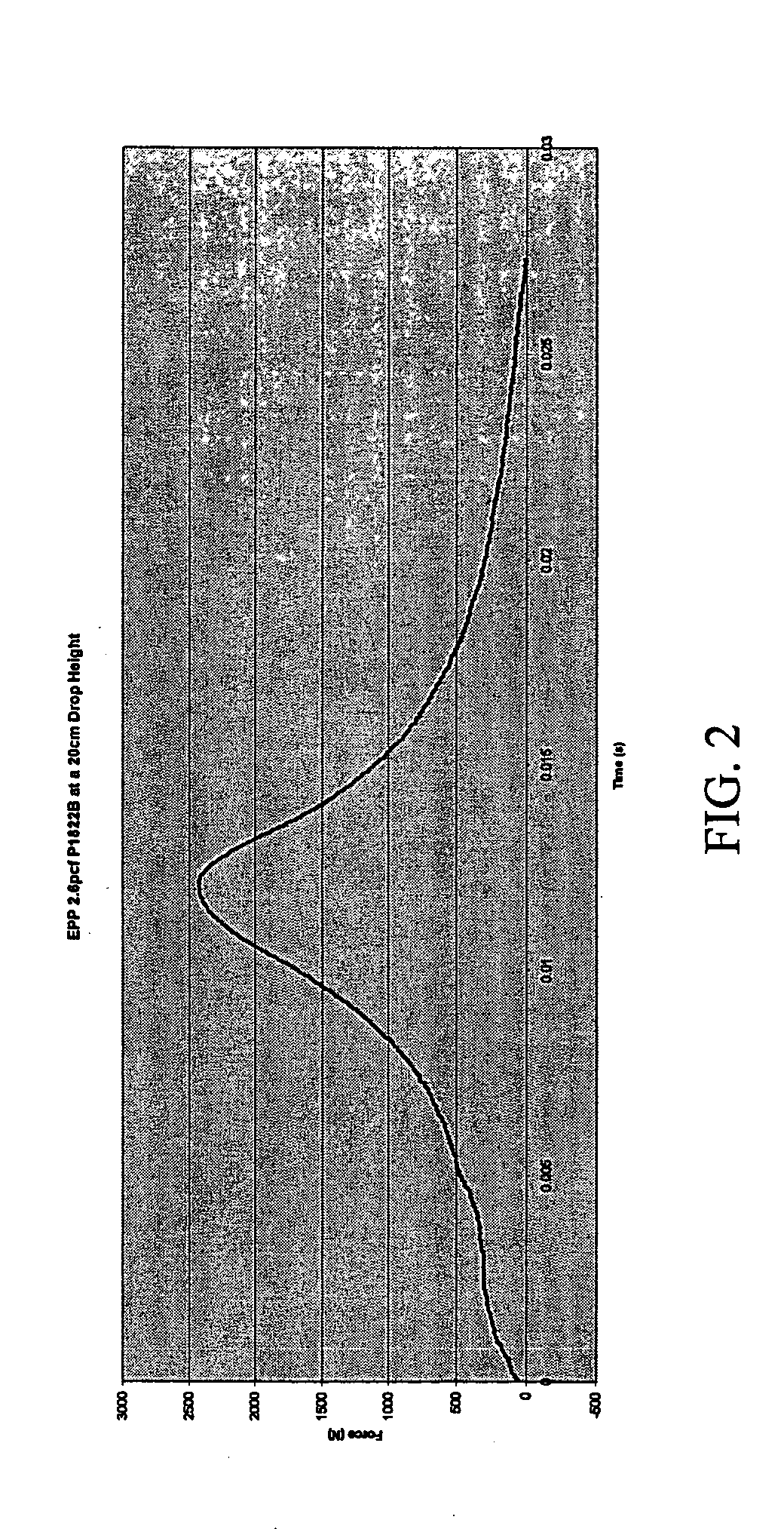Impact energy management method and system
a technology of energy management and energy management, applied in the field of impact energy management method and system, can solve the problems of large limitation of the adaptability of the foam, the inability of the foam to adapt to a wide range of impact energy, and the mismatch of the functional capability of the foam, so as to reduce the force of an impact
- Summary
- Abstract
- Description
- Claims
- Application Information
AI Technical Summary
Benefits of technology
Problems solved by technology
Method used
Image
Examples
Embodiment Construction
[0063]A compressible, impact-absorbing compressible cell 10 embodied in accordance with the invention is shown in FIGS. 6 and 7 of the drawing.
[0064]In the illustrative embodiment of FIGS. 6 and 7, the cell 10 is made from a thermoplastic material, such as a thermoplastic elastomer (TPE) material, formed into a thin-walled, hollow enclosure 12 with a top wall 14a and a bottom wall 14b and an orifice 16 through its bottom wall 14b. The side walls 18 of the cell 10 are oriented semivertically, such that they provide an initial resistance to an impact on the cell 10, but then strategically buckle outwardly to allow the fluid in the cell 10, in this case air, to manage the remainder of the impact by venting through the orifice 16, as indicated by the air flow arrow 20. The resilient properties of the thermoplastic material from which the cell 10 is fabricated, coupled with the refill of air through the orifice 16, allow the cell 10 to quickly return to its original shape after impact.
[0...
PUM
| Property | Measurement | Unit |
|---|---|---|
| Thickness | aaaaa | aaaaa |
| Thickness | aaaaa | aaaaa |
| Angle | aaaaa | aaaaa |
Abstract
Description
Claims
Application Information
 Login to View More
Login to View More - R&D
- Intellectual Property
- Life Sciences
- Materials
- Tech Scout
- Unparalleled Data Quality
- Higher Quality Content
- 60% Fewer Hallucinations
Browse by: Latest US Patents, China's latest patents, Technical Efficacy Thesaurus, Application Domain, Technology Topic, Popular Technical Reports.
© 2025 PatSnap. All rights reserved.Legal|Privacy policy|Modern Slavery Act Transparency Statement|Sitemap|About US| Contact US: help@patsnap.com



